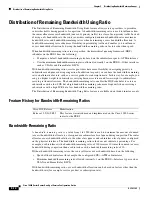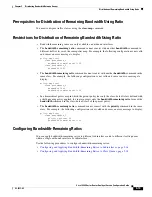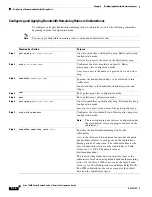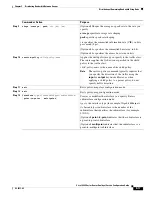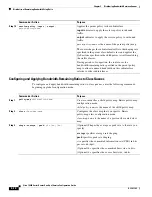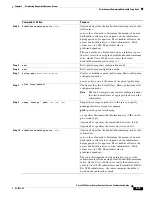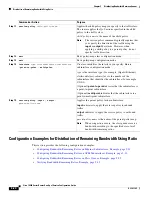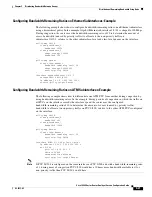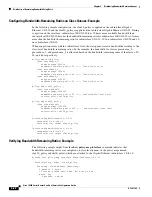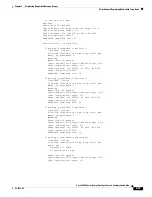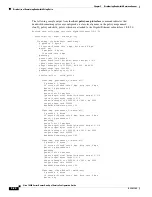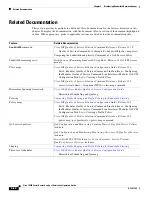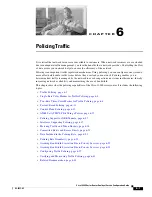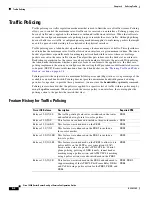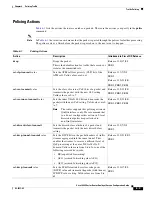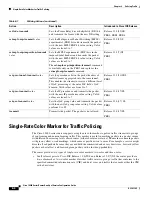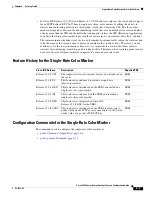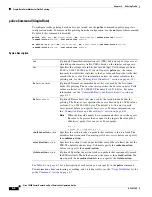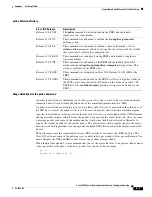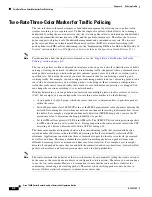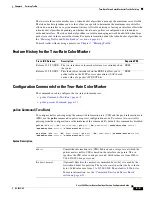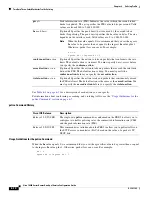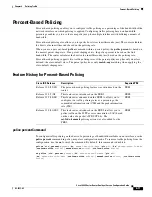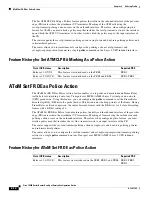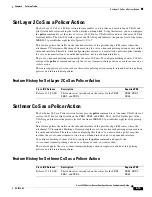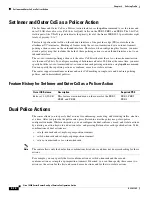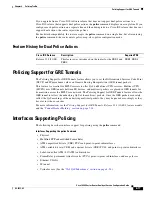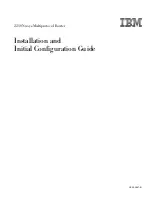
6-2
Cisco 10000 Series Router Quality of Service Configuration Guide
OL-7433-09
Chapter 6 Policing Traffic
Traffic Policing
Traffic Policing
Traffic policing is a traffic regulation mechanism that is used to limit the rate of traffic streams. Policing
allows you to control the maximum rate of traffic sent or received on an interface. Policing propagates
bursts of traffic and is applied to the inbound or outbound traffic on an interface. When the traffic rate
exceeds the configured maximum rate, policing drops or remarks the excess traffic. Although policing
does not buffer excess traffic, a configured queuing mechanism applies to conforming packets that might
need to be queued while waiting to be serialized at the physical interface.
Traffic policing uses a token bucket algorithm to manage the maximum rate of traffic. This algorithm is
used to define the maximum rate of traffic allowed on an interface at a given moment in time. The token
bucket algorithm is especially useful in managing network bandwidth in cases where several large
packets are sent in the same traffic stream. The algorithm puts tokens into the bucket at a certain rate.
Each token is permission for the source to send a specific number of bits into the network. With policing,
the token bucket determines whether a packet exceeds or conforms to the applied rate. In either case,
policing implements the action you configure such as setting the IP precedence or differentiated services
code point (DSCP). For more information about the token bucket, see the
“Metering Traffic and Token
Buckets” section on page 6-18
.
Policing restricts the output rate to a maximum kilobits per second (kbps) value or to a percentage of the
available or unused bandwidth. Policing does not provide a minimum bandwidth guarantee during
periods of congestion; to provide these guarantees, you must use the
bandwidth
or
priority
command.
Policing is class-based in that the policer is applied to a specific class of traffic within a policy map by
using the
police
command. When you attach the service policy to an interface, the router applies the
policing action to the packets that match that class.
Feature History for Traffic Policing
Cisco IOS Release
Description
Required PRE
Release 12.0(17)SL
The traffic policing feature was introduced on the router
and included a single-rate two-color policer.
PRE1
Release 12.0(25)S
This feature was enhanced to include a three-color marker. PRE1
Release 12.2(16)BX
This feature was introduced on the PRE2.
PRE2
Release 12.3(7)XI
This feature was enhanced on the PRE2 to include a
three-color marker.
PRE2
Release 12.2(27)SBB
This feature was enhanced on the PRE2 to include a
two-rate policer.
PRE2
Release 12.2(31)SB2
This feature was introduced on the PRE3 to allow you to
police traffic on the L2TP access concentrator (LAC)
based on the value of a packet’s IP DSCP bits. Control
plane policing, policing of GRE tunnels, tunnel header
marking using a police action, and ATM CLP bit marking
using a police action were also introduced on the PRE3.
PRE3
Release 12.2(33)SB
This feature was introduced on the PRE4 and enhanced to
support marking of the ATM CLP bit, Frame Relay DE bit,
and CoS bit using a police action for the PRE2, PRE3, and
PRE4.
PRE2, PRE3,
PRE4

